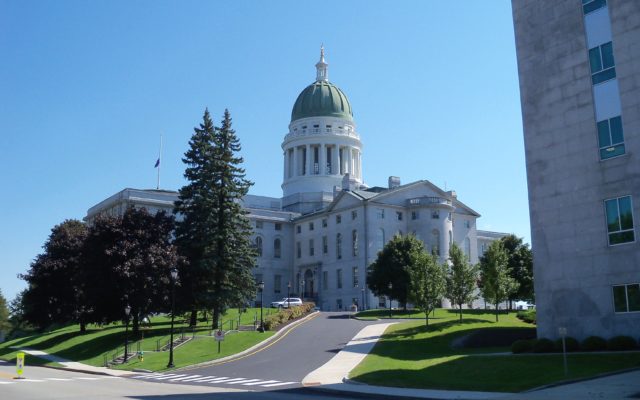
A quarter of Maine House races have only 1 major-party candidate
By Josh Keefe, The Maine Monitor
Republican Steven Foster is running for his fourth term in the State House’s lower chamber, representing Dexter and several other towns west of Bangor. He has won every election easily — because he has never had an opponent.
No one has challenged him in four consecutive Republican primaries. In November, he will again be the only name his district’s voters will see on the general election ballot for state representative.
“It seems like somebody would step forward and throw their hat in the ring if there was enough opposition,” Foster told The Monitor.
Foster ran for the first time in 2018, shortly after retiring as a Sappi paper mill manager, only because his predecessor in the State House asked him to.
He hopes the lack of opposition indicates he represents the constituents from his conservative district well.
“I think people in my district are just like I was before I got involved in this, and I felt my representative down there, I knew who it was,” Foster said. “I figured he was representing me pretty much as I would represent myself down there.”
Foster’s district is part of what appears to be a growing trend: Maine House districts in which one of the two major parties doesn’t bother to run a candidate in the general election.
In the upcoming election, 37 of the 151 Maine House districts, or one quarter, will have only one major-party candidate, according to a Monitor analysis of data from the secretary of state’s office. That’s up from 22 districts in 2008 and 10 in 2010.
This is occurring as the number of independent voters in Maine has declined, falling below the number registered with each major political party for the first time in decades.
The number of races where Democrats and Republicans did not face off rose significantly in the pandemic election of 2020, and has stayed at almost the same level in subsequent elections.
“At this point I would say still a little too early to say for sure, but this certainly looks like the start of a trend,” said Mark Brewer, chair of the political science department at the University of Maine. Brewer noted that as party polarization increases across the country, it’s likely that the number of districts considered “safe” for one party will also increase.
“Seats that are safe for one party are less likely to draw a candidate from the opposing major party,” he wrote in an email.
Maine’s House districts were redrawn after the 2020 census, a process largely free of the partisan rancor that often plagues redistricting. Most districts stayed about the same. The map below shows the districts with only one major-party candidate on November’s ballot.
Each district is home to about 9,000 people. The districts Republicans are not challenging are largely clustered in more densely populated southern Maine. The districts Democrats are sitting out are more rural, and therefore larger, and more spread out across the state.
The state Senate has just 35 districts, each representing nearly 40,000 people. Only three 2024 Senate candidates are running in an election without a challenger. All three are Democrats.
Of the 37 House districts without a major-party candidate, 24 people are running unopposed; the other 13 have at least one independent challenger.
There are just two independents currently in the Maine House, and one is not seeking reelection. Incumbent Bill Pluecker of Warren, west of Rockland, is running as an independent in District 44 against Republican Ray Thombs. In District 56, which consists of three towns west of Augusta, Republican incumbent Randall Greenwood is facing off against independent Kent Ackley for the fifth consecutive election. They have each won twice.
Only one of the 37 districts missing a major-party candidate had a contested primary. That means 23 candidates will likely represent their constituents in the next legislature without having faced challengers at any stage this year.
Despite these numbers, Maine’s rate of uncontested State House elections is lower than the national average. Between 1970 and 2002, the average percentage of uncontested races in state lower chambers was 37 percent, a rate that remained relatively flat, according to one analysis.
A more recent analysis suggested that around 50 percent of partisan elections nationwide are uncontested, with Democrats much more likely to sit out a general election.
For Foster, term limits will likely end his run of uncontested victories. He cannot run again in 2026, and that’s fine with him.
“It’s not something that I need in my life, to be down there,” he said.
This story was originally published by The Maine Monitor, a nonprofit and nonpartisan news organization. To get regular coverage from the Monitor, sign up for a free Monitor newsletter here.